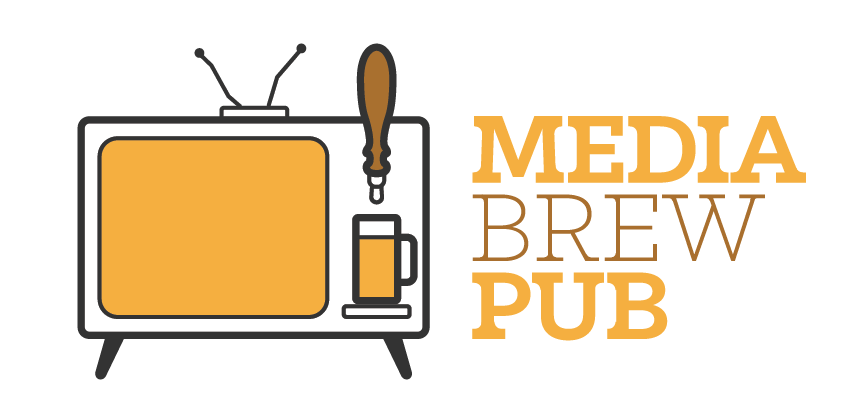 If it wasn’t clear before, it is now: Peter Jackson has pulled a George Lucas on a trilogy set before another trilogy that’s revered and superior in every way. Just as Thorin (Richard Armitage) becomes blind with greed in The Hobbit: The Battle of the Five Armies, Jackson, New Line Cinema, MGM, and Warner Bros. Pictures – despite whatever good intentions they may have in bringing audiences back to Middle-earth – became greedy themselves, unnecessarily splitting a 350-page novel into three movies to rake in as much money as possible (the franchise will likely gross at least $3 billion worldwide after this one, and that’s not including home media sales). Now, there’s an acceptable way of doing that: simply deliver three good movies. Marvel Studios has consistently been doing that with the Marvel Cinematic Universe, and movie #11 is just over the horizon for them.
If it wasn’t clear before, it is now: Peter Jackson has pulled a George Lucas on a trilogy set before another trilogy that’s revered and superior in every way. Just as Thorin (Richard Armitage) becomes blind with greed in The Hobbit: The Battle of the Five Armies, Jackson, New Line Cinema, MGM, and Warner Bros. Pictures – despite whatever good intentions they may have in bringing audiences back to Middle-earth – became greedy themselves, unnecessarily splitting a 350-page novel into three movies to rake in as much money as possible (the franchise will likely gross at least $3 billion worldwide after this one, and that’s not including home media sales). Now, there’s an acceptable way of doing that: simply deliver three good movies. Marvel Studios has consistently been doing that with the Marvel Cinematic Universe, and movie #11 is just over the horizon for them.
Instead, Jackson and co. have given us three movies that progress from decent to frustrating to – finally – mindless. Coming off the heels of a disappointing entry in The Desolation of Smaug, The Battle of the Five Armies should have mustered whatever dignity this trilogy had left and charged forward. Instead, it’s an emotionally detached, often cringeworthy entry that never bores, yet ultimately never feels fulfilling.
 To preface the rest of the review, I will disclose that I haven’t read The Hobbit or any of the Lord of the Rings novels by J. R. R. Tolkien. Does that make a significant difference? I don’t believe so, though I’m sure that those who have will find a greater emotional investment than the film has to offer since they are already familiar with the story.
To preface the rest of the review, I will disclose that I haven’t read The Hobbit or any of the Lord of the Rings novels by J. R. R. Tolkien. Does that make a significant difference? I don’t believe so, though I’m sure that those who have will find a greater emotional investment than the film has to offer since they are already familiar with the story.
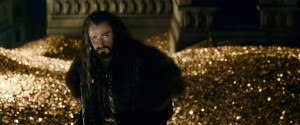 After Bilbo (Martin Freeman) and the company of Dwarves woke him up and aggravated him in the last film, the dragon Smaug (Benedict Cumberbatch) attacks Laketown and leaves it in ruin before being dispatched by Bard (Luke Evans). Now with no home, the survivors of Laketown, rallied by Bard, head to the Lonely Mountain, where they hope to find shelter and seek a portion of treasure that Thorin promised them. Thorin himself, afflicted with “dragon’s disease,” aggressively searches for the Arkenstone, alienating the rest of the company. News of Smaug’s demise and the Dwarves’ reclaiming of Erebor spreads, and soon, armies of men, Elves, Dwarves, and Orcs head there, culminating in a battle that could decide the fate of Middle-earth.
After Bilbo (Martin Freeman) and the company of Dwarves woke him up and aggravated him in the last film, the dragon Smaug (Benedict Cumberbatch) attacks Laketown and leaves it in ruin before being dispatched by Bard (Luke Evans). Now with no home, the survivors of Laketown, rallied by Bard, head to the Lonely Mountain, where they hope to find shelter and seek a portion of treasure that Thorin promised them. Thorin himself, afflicted with “dragon’s disease,” aggressively searches for the Arkenstone, alienating the rest of the company. News of Smaug’s demise and the Dwarves’ reclaiming of Erebor spreads, and soon, armies of men, Elves, Dwarves, and Orcs head there, culminating in a battle that could decide the fate of Middle-earth.
The film stumbles from the get go with its opening sequence. Ending The Desolation of Smaug with a cliffhanger in Smaug flying to Laketown was a dumb decision, and it shows in this entry. 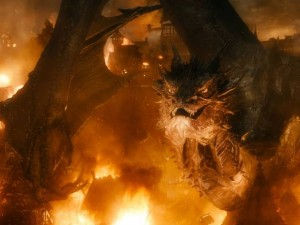 It’s certainly not a bad sequence, but it feels tacked on and out of place with the rest of the film. With that in mind, Smaug himself is mishandled, as he only breathes fire upon the hapless town and says a few lines to Bard before dying – an overall short sequence. Gone is the bravado that was so carefully established in the last film, and here, he seems almost like a whole new character because he’s so limited. As a result, his death feels cheap, lacking the “oomph” factor it needs. Why this wasn’t the ending to the previous film is beyond me; both that film and this one needed it to be.
It’s certainly not a bad sequence, but it feels tacked on and out of place with the rest of the film. With that in mind, Smaug himself is mishandled, as he only breathes fire upon the hapless town and says a few lines to Bard before dying – an overall short sequence. Gone is the bravado that was so carefully established in the last film, and here, he seems almost like a whole new character because he’s so limited. As a result, his death feels cheap, lacking the “oomph” factor it needs. Why this wasn’t the ending to the previous film is beyond me; both that film and this one needed it to be.
Much of the film’s 144-minute runtime – the shortest of both this trilogy and the Middle-earth film saga – is spent depicting the titular battle, which offers scale and action galore that it resembles a video game. Heck, it may as well be a 3-D version of Warcraft III, as the pale Orc Azog (Manu Bennett) observes the battle from a bird’s-eye view and directs his troops accordingly. The battle unfolds through a series of setpieces, and Jackson strings us along from one to another. So much action is thrown at us that absurd things brazenly occur, such as Dwarves riding rams that literally show up out of nowhere, and Legolas (Orlando Bloom) defying physics by jumping from one falling debris to another in order to get to safety. There’s always something happening to ensure that we’re never bored, but to me, it all means jack squat since the film drops the ball with most of its characters, robbing the action of emotional tension.
 It’s almost incredible how even after three films, I still don’t care about the majority of the characters, and that’s because the films fail to develop them in meaningful ways, with the only exceptions being Bilbo and Thorin. A good chunk of the Dwarves are never given emotional arcs, and the only one that has an arc – Kili – is given a laughable one. By the time some of them die, their deaths don’t mean anything; I think it speaks volumes that when they do die, I got relieved since that meant fewer characters whom I could stop trying to care about. It’s a simple rule of storytelling: if you don’t have characters that you care about, then you won’t care about what they do. Most of the characters that I do care about are those who will appear in The Lord of the Rings films, even though some are basically shoehorned in this trilogy for fan service. However, there aren’t any stakes involving them since we already know that they will live.
It’s almost incredible how even after three films, I still don’t care about the majority of the characters, and that’s because the films fail to develop them in meaningful ways, with the only exceptions being Bilbo and Thorin. A good chunk of the Dwarves are never given emotional arcs, and the only one that has an arc – Kili – is given a laughable one. By the time some of them die, their deaths don’t mean anything; I think it speaks volumes that when they do die, I got relieved since that meant fewer characters whom I could stop trying to care about. It’s a simple rule of storytelling: if you don’t have characters that you care about, then you won’t care about what they do. Most of the characters that I do care about are those who will appear in The Lord of the Rings films, even though some are basically shoehorned in this trilogy for fan service. However, there aren’t any stakes involving them since we already know that they will live.
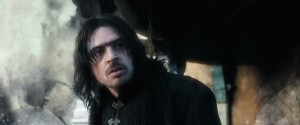 What compounds this issue even further is how The Battle of the Five Armies ridiculously and pointlessly handles its characters. As compelling as Thorin’s descent into greed is, the way he pulls himself out of it is flat-out unconvincing. For some inexplicable reason, much time is spent following Alfrid (Ryan Gage), the cowardly, greedy assistant to the Master of Laketown (Stephen Fry). We’re led to believe that he’ll change over the course of the story, but nope: he stays the same and contributes absolute zilch to the story. It’s an outrage, especially when you consider the fact that he gets more screentime than many of the more interesting characters here. Furthermore, It’s established that the Dwarves don’t agree with Thorin’s actions, implying that they have a conscience, but they appear to be content with being his cronies when he threatens war.
What compounds this issue even further is how The Battle of the Five Armies ridiculously and pointlessly handles its characters. As compelling as Thorin’s descent into greed is, the way he pulls himself out of it is flat-out unconvincing. For some inexplicable reason, much time is spent following Alfrid (Ryan Gage), the cowardly, greedy assistant to the Master of Laketown (Stephen Fry). We’re led to believe that he’ll change over the course of the story, but nope: he stays the same and contributes absolute zilch to the story. It’s an outrage, especially when you consider the fact that he gets more screentime than many of the more interesting characters here. Furthermore, It’s established that the Dwarves don’t agree with Thorin’s actions, implying that they have a conscience, but they appear to be content with being his cronies when he threatens war.
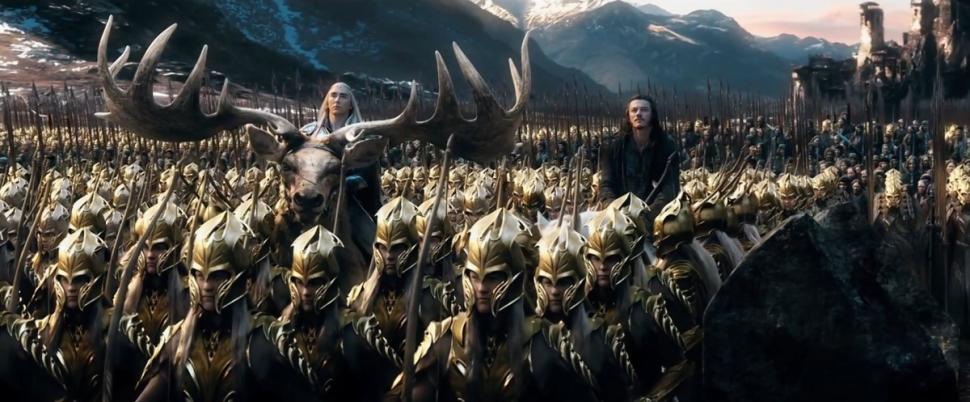 The love story between Kili and Tauriel (Evangeline Lilly) rivals that of Anakin Skywalker and Padmé Amidala in the Star Wars prequels. The only reason why this so-called relationship is here in the first place is to expand Kili as a character and to give Tauriel a reason to butt heads with Thranduil (Lee Pace) and Legolas when she’s not kicking ass. However, it’s handled so terribly, as it’s rife with cringeworthy dialogue and makes absolutely no sense at all. This romance is shamelessly used to raise the stakes for these two characters during the battle, but it backfires because it’s already an irrelevant comedy that’s trying to take itself seriously.
The love story between Kili and Tauriel (Evangeline Lilly) rivals that of Anakin Skywalker and Padmé Amidala in the Star Wars prequels. The only reason why this so-called relationship is here in the first place is to expand Kili as a character and to give Tauriel a reason to butt heads with Thranduil (Lee Pace) and Legolas when she’s not kicking ass. However, it’s handled so terribly, as it’s rife with cringeworthy dialogue and makes absolutely no sense at all. This romance is shamelessly used to raise the stakes for these two characters during the battle, but it backfires because it’s already an irrelevant comedy that’s trying to take itself seriously.
 Corny, half-assed, and dunderheaded dialogue doesn’t cease with the love story, as it’s rife in any scene that involves the relationships between Legolas, Tauriel, and Thranduil. The dialogue is fine when they are verbally sparring with one another, but when the time comes for them to open up about love, the words that come out of their mouths are just laughably awful. What makes it worse is that they are being serious, and nothing makes dreadful dialogue worse than characters begging to be taken seriously. Their attempts to pull off emotional weight devolve into mere farce.
Corny, half-assed, and dunderheaded dialogue doesn’t cease with the love story, as it’s rife in any scene that involves the relationships between Legolas, Tauriel, and Thranduil. The dialogue is fine when they are verbally sparring with one another, but when the time comes for them to open up about love, the words that come out of their mouths are just laughably awful. What makes it worse is that they are being serious, and nothing makes dreadful dialogue worse than characters begging to be taken seriously. Their attempts to pull off emotional weight devolve into mere farce.
For a film that’s supposed to end a trilogy, there’s no sense of completion other than the fact that Bilbo’s adventure is over. The Battle of the Five Armies introduces new faces and brings back a few familiar ones, but they drift in and out of the story, only to be never seen again. 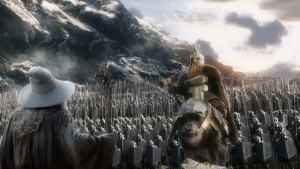 Actor Billy Connolly appears as Thorin’s cousin Dáin, but the total length of footage with him is less than two minutes before he’s never brought up again. Others come and help fight before they too disappear, and it’s frustrating. It seems unfair to compare this ending with that of The Lord of the Rings: The Return of the King, but for all the jokes that film got for its incredibly long ending, what it does do that this one doesn’t is give everyone a moment so we can see their character arcs close. This problem doesn’t pertain to characters alone: the Arkenstone, which is made a big deal about for the film’s first half, is never mentioned or shown at all afterwards. I don’t care if it’s addressed in a deleted scene that we’ll eventually see on home media; it’s neither used as a red herring nor a MacGuffin in the film, so what’s the reason for it disappearing? Jackson tries to tie up his trilogy in a neat manner quickly, but he drops things that we can easily notice and question.
Actor Billy Connolly appears as Thorin’s cousin Dáin, but the total length of footage with him is less than two minutes before he’s never brought up again. Others come and help fight before they too disappear, and it’s frustrating. It seems unfair to compare this ending with that of The Lord of the Rings: The Return of the King, but for all the jokes that film got for its incredibly long ending, what it does do that this one doesn’t is give everyone a moment so we can see their character arcs close. This problem doesn’t pertain to characters alone: the Arkenstone, which is made a big deal about for the film’s first half, is never mentioned or shown at all afterwards. I don’t care if it’s addressed in a deleted scene that we’ll eventually see on home media; it’s neither used as a red herring nor a MacGuffin in the film, so what’s the reason for it disappearing? Jackson tries to tie up his trilogy in a neat manner quickly, but he drops things that we can easily notice and question.
 Quite obvious now is that the film – and the trilogy as a whole – puts too much effort into setting up events in The Lord of the Rings that it becomes stifled. It doesn’t just stop with giving characters like Legolas, Saruman (Christopher Lee), Elrond (Hugo Weaving), and Galadriel (Cate Blanchett) an active role in these films (and that’s not counting Billy Boyd – Pippin in LOTR – who sings a nice end credits song). It flagrantly makes clunky allusions and references to LOTR, and any sequences that lead into the next three films are promptly brushed aside and leave us hanging, even though we know what will end up happening. I’m sure that the Hobbit films would work well on their own and run more smoothly if everything pointing to LOTR were taken out. An Unexpected Journey, despite being very slow, felt like a standalone film because it rarely brought up LOTR. As for The Desolation of Smaug and this entry, they get choked by the constant need to show that there’s more to come after Bilbo’s journey. They hardly get the chance to breathe and stand on their own.
Quite obvious now is that the film – and the trilogy as a whole – puts too much effort into setting up events in The Lord of the Rings that it becomes stifled. It doesn’t just stop with giving characters like Legolas, Saruman (Christopher Lee), Elrond (Hugo Weaving), and Galadriel (Cate Blanchett) an active role in these films (and that’s not counting Billy Boyd – Pippin in LOTR – who sings a nice end credits song). It flagrantly makes clunky allusions and references to LOTR, and any sequences that lead into the next three films are promptly brushed aside and leave us hanging, even though we know what will end up happening. I’m sure that the Hobbit films would work well on their own and run more smoothly if everything pointing to LOTR were taken out. An Unexpected Journey, despite being very slow, felt like a standalone film because it rarely brought up LOTR. As for The Desolation of Smaug and this entry, they get choked by the constant need to show that there’s more to come after Bilbo’s journey. They hardly get the chance to breathe and stand on their own.
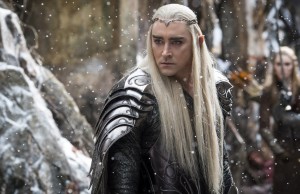 I’ve long felt that characters don’t matter as much as spectacle does in these films, and The Battle of Five Armies is no different. Subsequently, the cast don’t get many chances to shine unless their characters are given the respect they deserve. The sole character who comes out of this mess unscathed is Bilbo, and that’s because he has a credible emotional arc, making him the most likable character in this film and trilogy. Martin Freeman is fantastic as the eponymous hero, as he takes full advantage of the character’s awkwardness whenever necessary and also conveys the concern he has for friends with great sincerity. Richard Armitage plays Thorin with unruffled authority and dignity, and although the Dwarf isn’t handled as well as he could have been in this film, the actor does what he can to make his character one to be sympathized with. The cast members from The Lord of the Rings haven’t changed, and everyone else’s performances aren’t exactly memorable by any means.
I’ve long felt that characters don’t matter as much as spectacle does in these films, and The Battle of Five Armies is no different. Subsequently, the cast don’t get many chances to shine unless their characters are given the respect they deserve. The sole character who comes out of this mess unscathed is Bilbo, and that’s because he has a credible emotional arc, making him the most likable character in this film and trilogy. Martin Freeman is fantastic as the eponymous hero, as he takes full advantage of the character’s awkwardness whenever necessary and also conveys the concern he has for friends with great sincerity. Richard Armitage plays Thorin with unruffled authority and dignity, and although the Dwarf isn’t handled as well as he could have been in this film, the actor does what he can to make his character one to be sympathized with. The cast members from The Lord of the Rings haven’t changed, and everyone else’s performances aren’t exactly memorable by any means.
 It’s undeniable that the Hobbit trilogy is a visual feast, but with this film, I feel that I’ve stayed at the feast for too long, and the food has since lost its appeal. Aerial shots of armies assembling and then fighting no longer impress me because they aren’t as breathtaking or convincing as those featured in The Lord of the Rings films. In fact, they’ve digressed. The creature and Orc designs look uninspired, and the fact that much of what we’re seeing is CGI means the magic is gone. A reliance on practical effects, makeup, and extras would have imparted a sense of grittiness, which is sorely missed here. The only visual aspect that I do appreciate are the eye-popping costumes, particularly for Thranduil and the Elves.
It’s undeniable that the Hobbit trilogy is a visual feast, but with this film, I feel that I’ve stayed at the feast for too long, and the food has since lost its appeal. Aerial shots of armies assembling and then fighting no longer impress me because they aren’t as breathtaking or convincing as those featured in The Lord of the Rings films. In fact, they’ve digressed. The creature and Orc designs look uninspired, and the fact that much of what we’re seeing is CGI means the magic is gone. A reliance on practical effects, makeup, and extras would have imparted a sense of grittiness, which is sorely missed here. The only visual aspect that I do appreciate are the eye-popping costumes, particularly for Thranduil and the Elves.
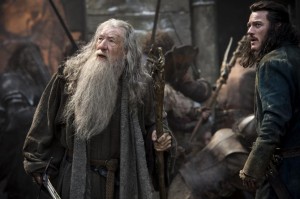 As the film’s credits rolled, I couldn’t help but compare Jackson and his Hobbit trilogy to George Lucas and his Star Wars prequel trilogy. After considerable time had passed since their original trilogies, the two filmmakers took steps to make prequel films that would ideally stand on their own while leading into the stories of the originals. Their first films had a fair share of hiccups, but at least some people were glad to be back in their respective universes. As films two and three came out, one could sense an increasing emphasis on showing off visuals with CGI, iconic characters being shoehorned in, unnecessary references to the original films, the mishandling of new characters, and the lack of proper character arcs. Their prequel trilogies were undeniably weaker than the original trilogies, and there was confusion as to how the creators of these fantastic universes could screw up this badly. At the end of the day though, the films made bank, and that seemed to satisfy the two directors.
As the film’s credits rolled, I couldn’t help but compare Jackson and his Hobbit trilogy to George Lucas and his Star Wars prequel trilogy. After considerable time had passed since their original trilogies, the two filmmakers took steps to make prequel films that would ideally stand on their own while leading into the stories of the originals. Their first films had a fair share of hiccups, but at least some people were glad to be back in their respective universes. As films two and three came out, one could sense an increasing emphasis on showing off visuals with CGI, iconic characters being shoehorned in, unnecessary references to the original films, the mishandling of new characters, and the lack of proper character arcs. Their prequel trilogies were undeniably weaker than the original trilogies, and there was confusion as to how the creators of these fantastic universes could screw up this badly. At the end of the day though, the films made bank, and that seemed to satisfy the two directors.
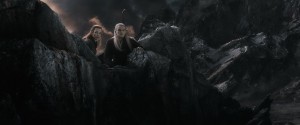 At long last, this adventure comes to an end, and it just may be the last time we’ll see Middle-earth on film. It’s just a shame, though, that it ends with its dignity in tatters. The Battle of the Five Armies presents near-endless action on such a large scale, but it lacks the emotional investment that should be found in its characters, and stumbles throughout. The film attempts to end with a bang, but only does so with a whimper.
At long last, this adventure comes to an end, and it just may be the last time we’ll see Middle-earth on film. It’s just a shame, though, that it ends with its dignity in tatters. The Battle of the Five Armies presents near-endless action on such a large scale, but it lacks the emotional investment that should be found in its characters, and stumbles throughout. The film attempts to end with a bang, but only does so with a whimper.
The Hobbit: The Battle of the Five Armies Rating: 2.0/5.0
The Hobbit Trilogy Rating: 2.5/5.0
* All photos courtesy of Warner Bros. Pictures
